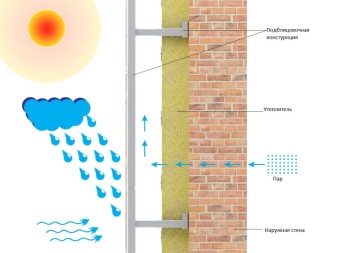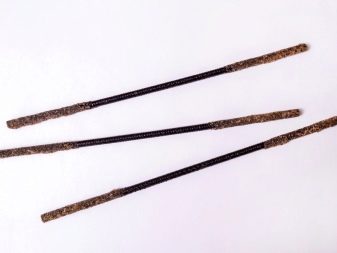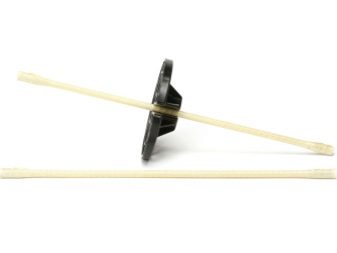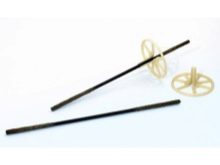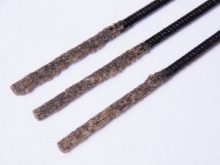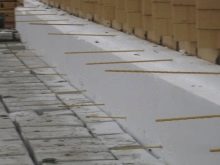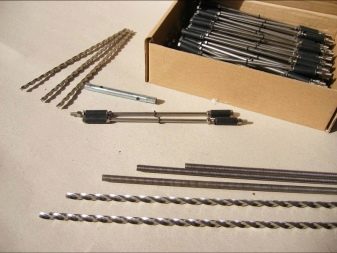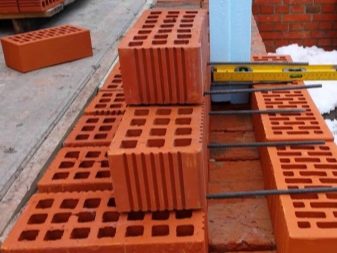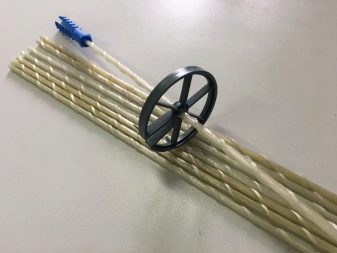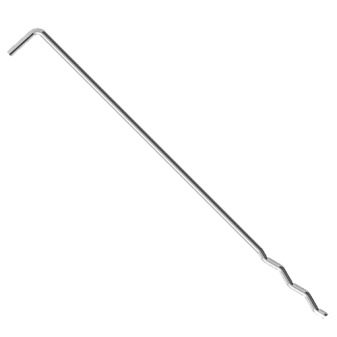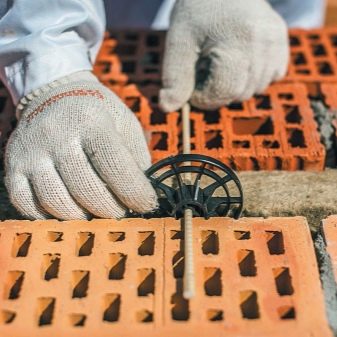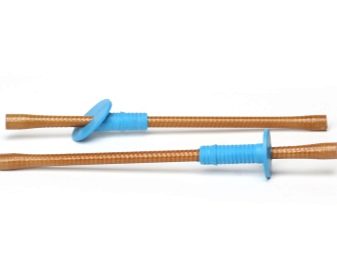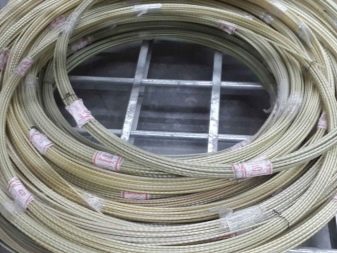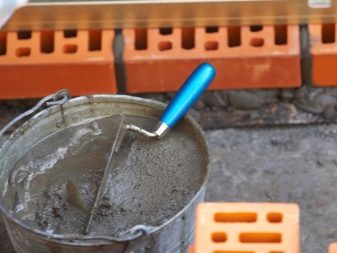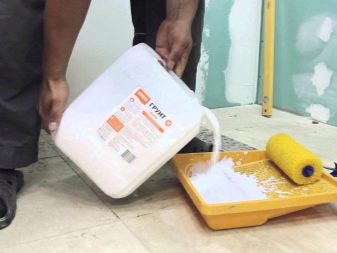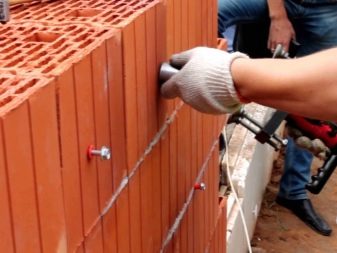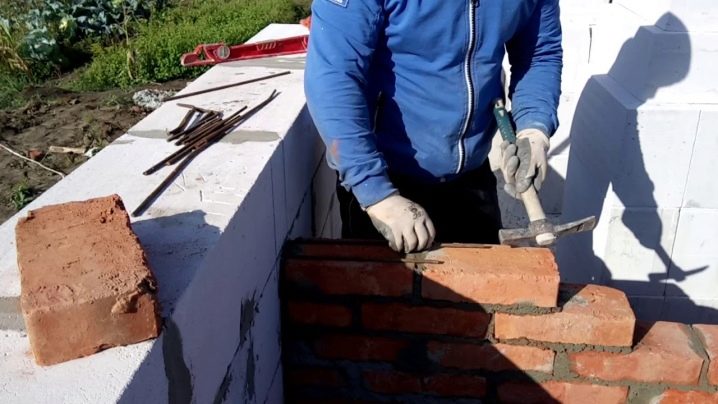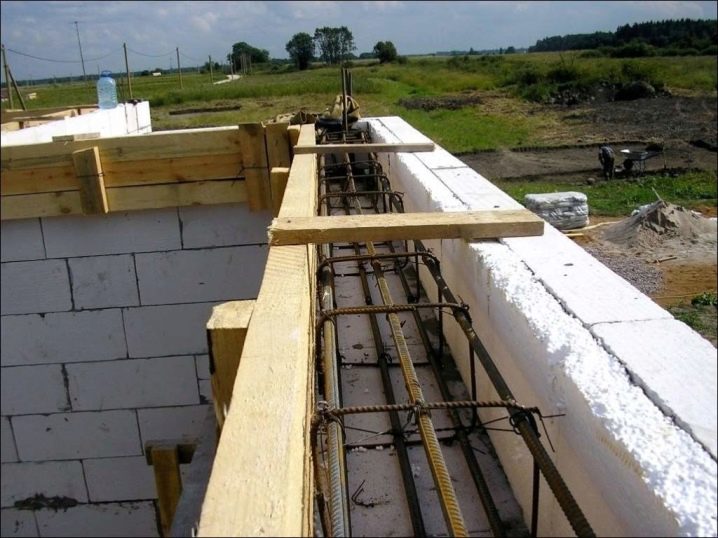Types and installation of flexible ties for brickwork
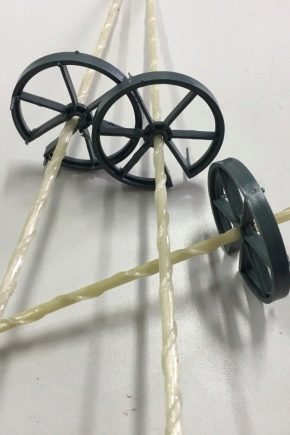
Flexible joints for brickwork are an important element of the building structure, connecting the supporting wall, insulation and facing material. In this way, the strength and durability of the erected building or structure is achieved. At present, reinforcing meshes are not used, as they have proven themselves from the negative side, but special metal rods are used.
Kinds
The inner walls of the building always have an almost ideally stable temperature, due to the fact that they are not affected by external weather conditions. However, the facing (outer) wall can easily be heated in warm time up to + 700 degrees Celsius, cooled in winter to minus 400 degrees.Such temperature differences between the inner and outer walls lead to the fact that the geometry of the outer lining changes.
Flexible connections at this moment allow to preserve the integrity of the structure and avoid cracks. Reinforcing anchors bend perfectly, withstand tensile strength and have high corrosion resistance. These rods do not create cold bridges with low thermal conductivity. Such characteristics allow to achieve high reliability and long life of the building.
The design is a shaped rod made of metal with a length of 20 to 65 cm. These details allow you to connect all the elements of the wall, including facing brick and aerated concrete. The size of the chosen ligament depends on the construction features used in the construction of a particular building. So, for homes no higher than 12 meters, it is recommended to use rods with a cross section of 4 millimeters. Metal structures with a cross section of 6 millimeters are suitable for higher structures. The flexible connection also has a thickening made of metal at both ends. This is necessary for more reliable fastening of the structure, since they play the role of anchors, which are firmly fixed in the joints of the brickwork.Sand fasteners are perfectly combined with the solution used for joints between masonry. It provides a strong fixation of flexible coupling. Walls are additionally protected against corrosion.
The construction element is used for walls with classic brickwork, aerated blocks and facing bricks. Several types of rods are produced.
Basalt
This composite material is lightweight and at the same time can withstand high loads. Such products, for example, are produced in Russia under the brand name "Galen". It has the lowest weight and does not create an additional load on the foundation of the house.
Steel
They are made of carbon steel and have a high level of corrosion protection. Flexible connections of Bever of production of Germany are most popular with professional builders. To protect against rust covered with a special compound of zinc.
Fiberglass
Only slightly inferior to basalt rods in some characteristics. So, they are less resilient, but have good tensile strength. Do not corrode.
Metallic
Made of stainless steel.These flexible connections are capable of forming bridges of cold, therefore they are used only with insulation.
The choice of this or that type of material depends on the specific conditions in which the installation will be carried out, as well as on the components in contact with the strapping.
Advantages and disadvantages
Composite materials are the most popular in modern construction, since They have a number of positive characteristics, including:
- small weight which does not influence in addition on a laying;
- excellent adhesion to the mortar, which organizes the laying of bricks;
- reliable protection against corrosion, which may occur due to the alkaline environment of concrete on metal rods;
- low thermal conductivity does not allow cold bridges to form in masonry;
- resistance to adverse environmental conditions makes it possible to achieve durability and structural strength.
Despite the obvious advantages, composite rods have significant drawbacks. There are two of them.
There is a low indicator of elasticity, for vertical reinforcement, such rods will not work, as they will not be able to adequately ensure the integrity of the structure.They are applied only to the device of horizontal structures.
Low fire resistance. Composite rods lose all their properties at temperatures above 6 thousand C, and therefore can not be used in buildings that are subject to increased requirements for fire resistance of walls.
If the listed disadvantages are significant, then carbon or stainless steel rods are used.
Calculation rules
In order to establish flexible connections (especially for aerated concrete, as this is a very soft material), The following algorithm of actions is applied:
- the size of the rods is determined;
- their necessary amount is calculated.
The length of the rod can be found by adding the thickness of the insulation and the size of the gap for ventilation. Add double the depth of the anchor. The depth is 90 millimeters, and the ventilation gap is 40 mm.
The calculation formula is as follows:
L = 90 + T + 40 + 90, where:
T is the width of the insulation material;
L is the calculated length of the anchor.
This method can be used to calculate what size a flexible connection is needed. For example, with a insulation thickness of 60 mm, a rod 280 millimeters long is required.
When it is necessary to calculate how many rods for the reinforcement link will be needed, you need to know at what distance from each other they should be located. Professional builders recommend applying at least 4 rods and not less than 5 rods for gas-block walls per square meter of brick masonry. Therefore, knowing the area of the walls, it is possible to determine the required number of material by multiplying this indicator by the recommended number of anchors by 1 m 2.
Installation instructions
For flexible connections to function properly, the recommended course of work should be strictly followed. Not the last role on the final result has the correct number and size of anchors, which vary depending on the thickness of the insulation. It is necessary to take into account the depth of immersion of the rods in the structure; it should not be less than 90 millimeters. Only after that proceed to the immediate preparation of the wall itself for installation.
- Clear the wall of excess mortar, dust and debris left after laying (a construction vacuum cleaner can be used).
- Close up the cracks using a freshly prepared solution.
- Apply a primer, and then a special compound that has antifungal properties.
- Mount the base for the installation of flexible connections.
The base for the outer wall is reinforcement and concrete. They are placed in a trench along the entire length of the walls and sunk by 300 or 450 millimeters. The height of the base above the ground should be at least 20 centimeters.
The device of the reinforcing communication for brick and gas-concrete walls differs. For masonry brick used standard schemes.
- For each 1 m 2 place 4 anchors, which are embedded in the seams. If the insulation is min. wool, the distance between the rods is increased to 50 centimeters. When polyurethane foam is used, the “step” along the wall is 250 millimeters, and in height it can be less than or equal to the size of the slab (no more than 1 meter). Additionally install reinforcing rods in the corners of the deformation of the seams, near the window and door openings, as well as in the corners and near the parapet of the building. It should be borne in mind that sometimes the horizontal seam of the main wall does not coincide with the seam of the cladding. In this case, the flexible bundle rod is positioned vertically, and then smeared with mortar.
- At the device of the reinforcing belt in walls from gas-concrete or gas-silicate blocks 5 rods are used for 1 m 2. They are mounted in a parallel position relative to the seams of the facing brick. In order to accomplish this, in the wall of gas blocks, with a perforator, they preliminarily arrange holes 10 mm in diameter and not less than 90 millimeters long. Then they are carefully wiped from dust and anchors are mounted at a distance of 50 centimeters from each other. Then everything is carefully covered with mortar.
The distance in height and in length from each anchor is the same. It is worth remembering that aerated concrete walls also need additional reinforcing ties in the same places as brick structures. For the device of additional reinforcing connections, it is possible to reduce the step between the anchors to 300 millimeters. The distance between the apertures and the reinforcing belt is 160 millimeters in height of the front wall and 12 centimeters in length of the building.
Flexible communications are required in each building. They ensure the safety of the structure, its durability and strength. If you follow all the nuances and choose the right reinforcing rods, you can independently mount these structures in the walls. This will save money and get a great result.In addition, you can gain invaluable experience with these building elements.
Learn more about flexible links in the video below.
